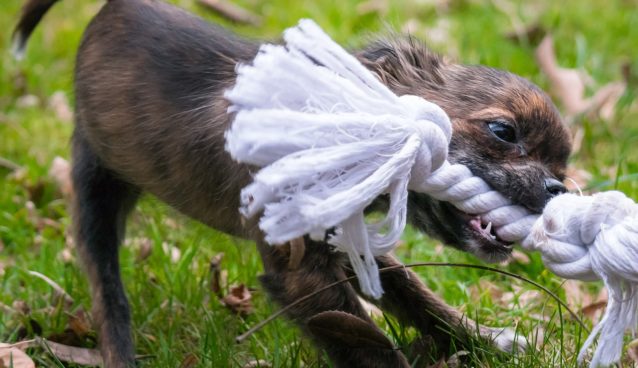Proofing Behaviours – Dog Training Tips
How to Proof Behaviours in Your Dog
Proofing a behaviour in your dog is an important step in training. We have all had that experience with our dog: we teach them a new command or trick (we are very proud about this!) – but when you try to show someone this amazing feat, your dog fails to do as commanded. We end up red-faced and wondering what went wrong!
Find out how to get your dog to do as commanded every-single-time by proofing a behaviour; learn what proofing is and how to do it.
What is Proofing a Behaviour?
We must proof a behaviour so our dog knows that the command must be done in all situations, no matter the distractions.
Proofing a behaviour in your dog is the part which most people skip over. If we split training into two section: 1) the initial training of a command, until your dog learns what you want him to do, and 2) the “practice makes perfect” part.
The initial training of a command can be the fun part, and feel the most rewarding to us when we manage to teach a new behaviour. The second part, the ongoing practice, can seem like a drag! But this half of the training is what ensures your dog listens to you every time, in any situation, no matter what the distractions are.
Imagine learning to drive. You may start learning in a very quiet area, somewhere with many features: a crossroad, a set of traffic lights, a stop sight, a change of speed and a roundabout, everything you need to learn the basics. After your first couple of lessons on the road in this area (which is like the first half of training a dog, the initial training) we know this wouldn’t mean you are now ready to take your driving test. You would next need to practice in various situations. You would move on to the open roads, where each set of traffic lights, and each roundabout and junction is different, with all the many distractions of other cars, people and road signs. You will keep practicing the same things over and over until you can drive with ease no matter the conditions. This is like the second half of training, the longest part, the proofing.
Why Proof a Behaviour?
You teach your dog a command because you want him to do that action when needed. Dogs learn well in quiet environments, for example at home, with few distractions, and with lots of tasty treat rewards to concentrate on. But when we go out into the noisy outside (or any other place), the distraction of other people/dogs/cars/rabbits etc can become a bigger attraction than listening to you repeatedly saying “heel!”
As with the driving example above, after the initial training of your dog, you next need to keep practicing in many situations with your dog, until it doesn’t matter what the situation is or the distraction, your dog will know what is needed.
Proofing a behaviour also generalizes it to every possible environment: at home, at someone else home, in the garden, in the park etc. You want your dog to know the behaviour applies to all situations, not just at home where he learnt it.
How to Proof a Behaviour
Start off by training your dog at home with the desired action. Once your dog knows the command by heart, and can obey the command at home every time without hesitation, it is time to proof the behaviour.
Tip: To avoid frustration and/or confusion, only move on to proofing a behaviour once you are sure your dog knows the command really well. A good test of this is if, at home, they will do the command every time, he won’t get confused and do some other action in response to the command, and will do the command immediately when told.
We can split proofing into two types:
1) Distraction Proofing helps to train your dog to focus on your command no matter how tempting it is to get distracted by something more exciting.
2) Situation Proofing helps to teach you dog which situations the behavior is expected in (usually all situations). For example, your dog knows not to jump on the sofa at home, but what about a friends house? He knows not to jump up at you, but what about a stranger?
You will want to build up slowly to more and more unusual and/or distracting situations. Here are a few situations you can work through (not all at once or in one day!) when proofing a behaviour:
Have a friend come over, and proof the command in your dog when other people are around.
Have your friend command your dog to do the action.
Use different voices (a strong voice, a soft voice, high tone, low tone etc. I have often found a dog won’t understand a command unless its said in a certain way, the way it learnt the command).
Have your dog wait for longer periods before treating. (For example, when teaching “lie down”, have them lie down then wait 5 seconds, 10 seconds, 15 seconds etc before treating).
Move into a different room.
Move into the garden.
Go to the park.
Proof the command when 1 meter away from your dog, 2 meters away, 3 meters etc.
Use a controllable distraction (a toy for example).
Move closer to other common distractions (maybe closer to other dogs in a park).
Think about the different types of areas and situations your dog will encounter, make a list, and try your best to work through them over time.
Vary the training by changing these variables:
- Duration. Extend the amount of time your dog should be perform the behaviour.
- Distractions. Increase the distractions, and change the types of distractions.
- Distance. Can you tell your dog to lie down from 10 meters away?
When she was younger, our dog Callie, a Cocker Spaniel, was not great at heeling (lets face it, Spaniels aren’t!). So we trained her until she would heel well through the park. Great! This made life much easier. Except, when we went to the beach, it was like she had never heard the word “heel” before! Why? She LOVES water, so near the sea this was all she cared about, she needed proofing for this extremely powerful temptation/distraction. We started off with training near by the sea (out of sight, but within smelling distance), until she would heel instead of pulling in the seas general direction. Then closer, and closer, until she would walk along the beach, making eye contact with us, instead of the sea, knowing this was the only way she would be let off.
Tips
- Proofing does not need to be done all in one go. It is an ongoing process. You may think your dog has the command perfected, only to run into a new situation where he doesn’t obey. That’s fine. Just plan a training session to proof for this new situation.
- Only change one variable at a time. Don’t try and change too many things at once when proofing a behaviour.
- Increase distractions slowly. If you are teaching “stay” and you know your dog gets excited round other dogs, introduce other dogs slowly, and from a distance. You may want to go to a quiet area of the park, in sight of other dogs, but not so close that they can be a distraction, then slowly move closer and closer.
- Use a long training lead where needed.
- Remember when training, keep sessions short, and keep the session fun. Click here for our training tips.









